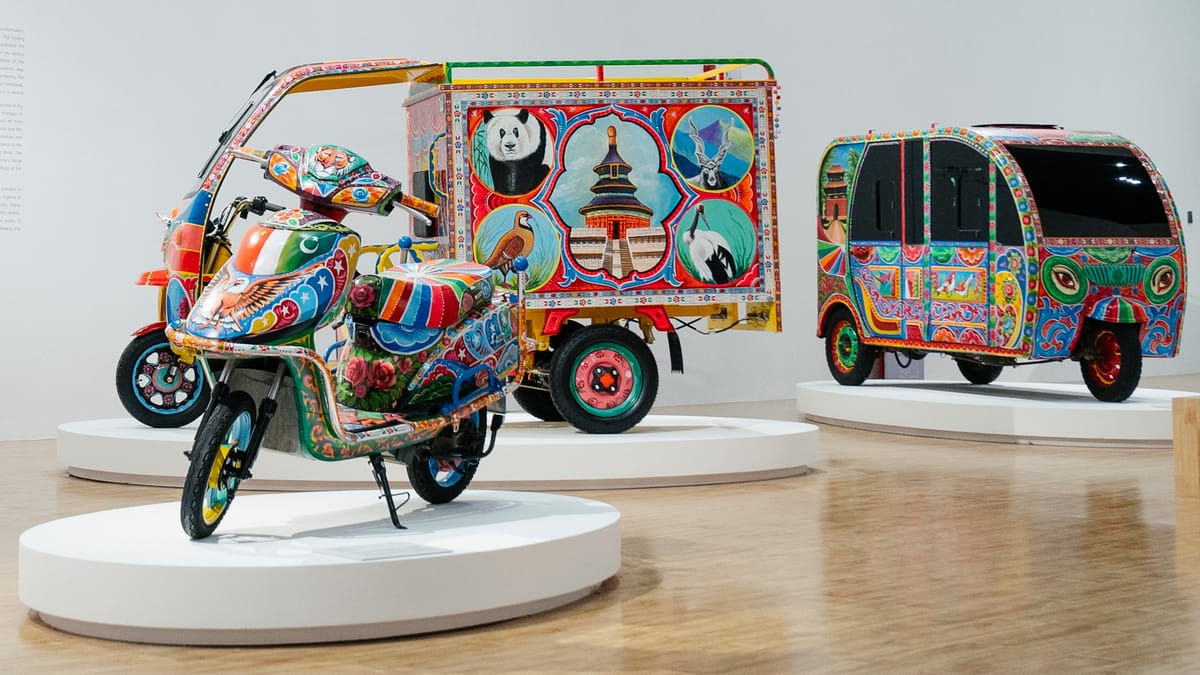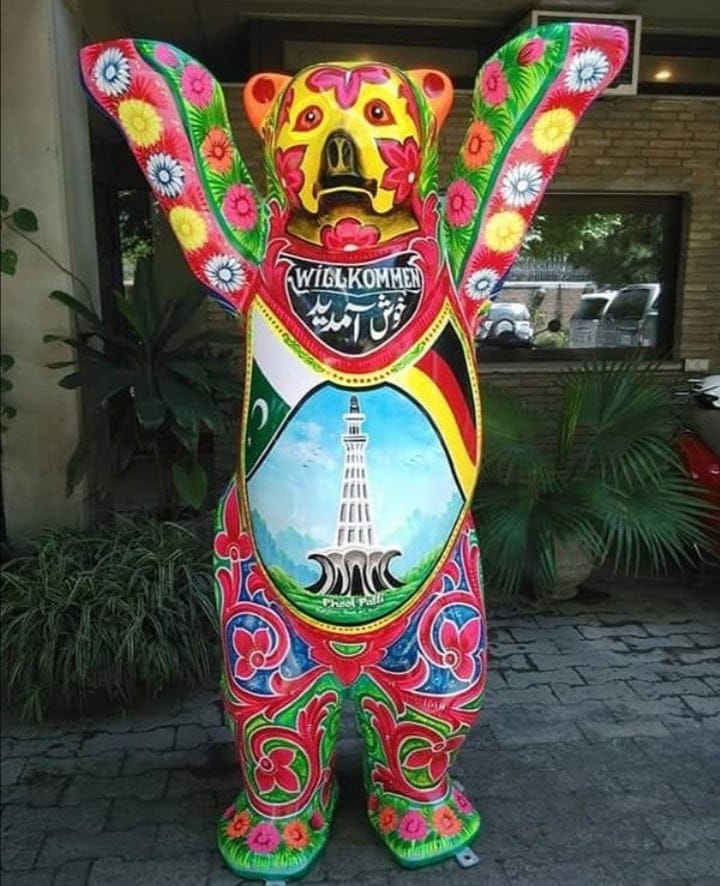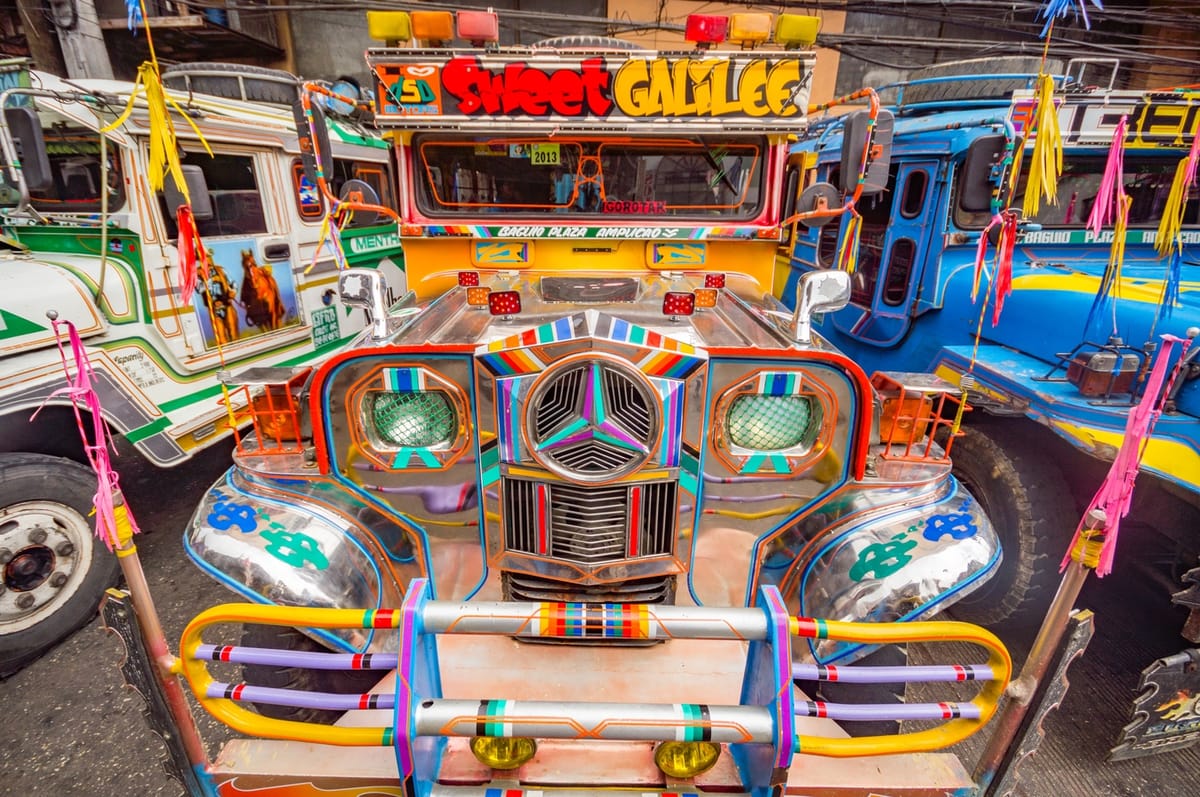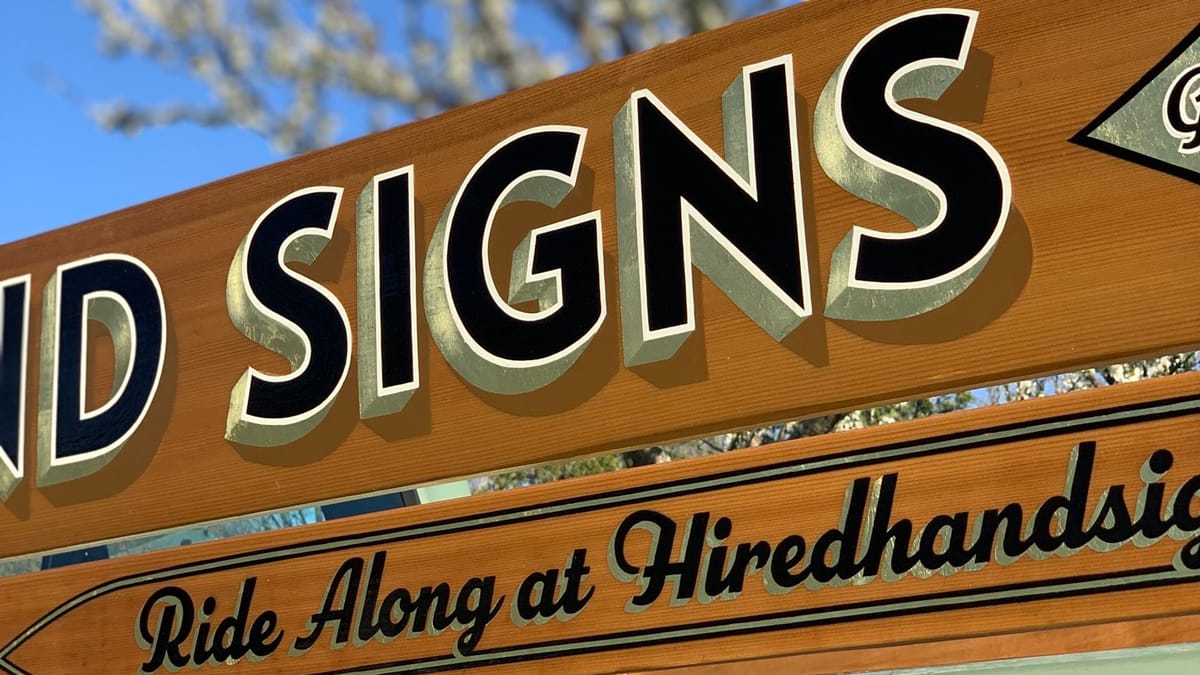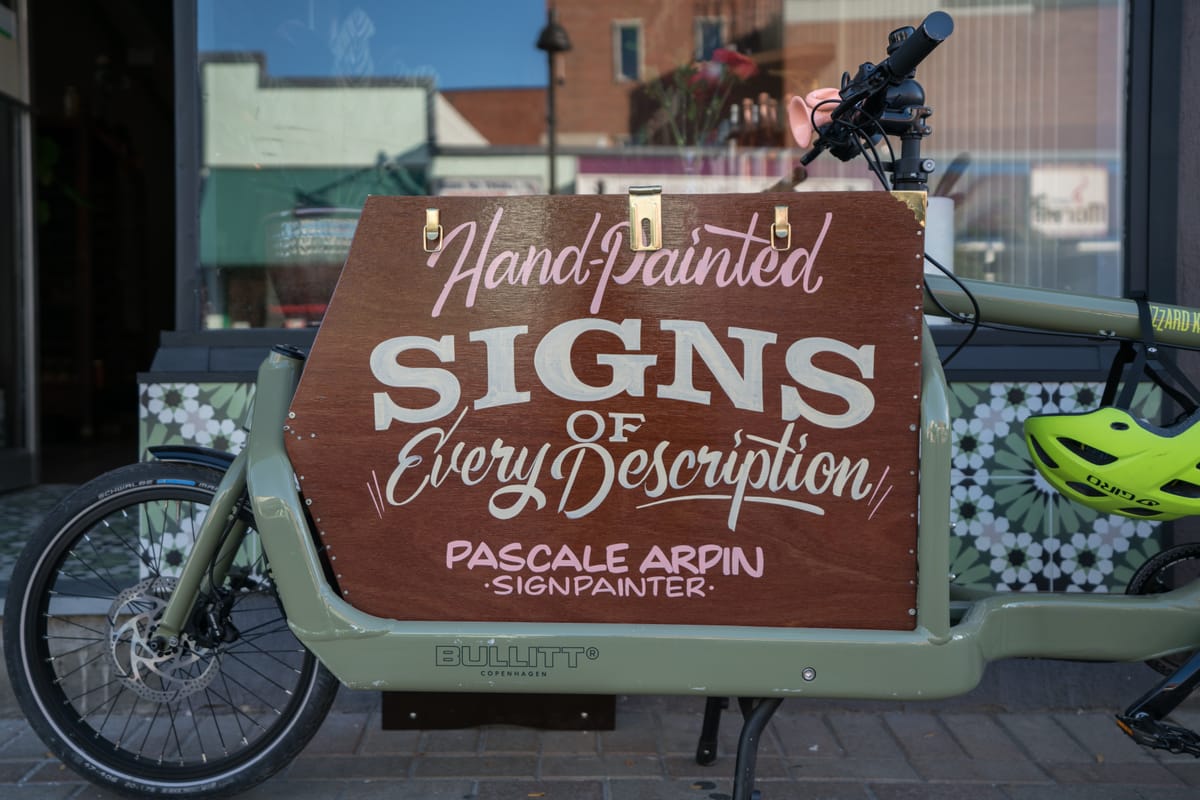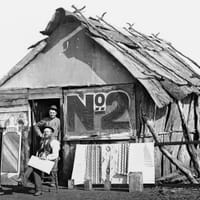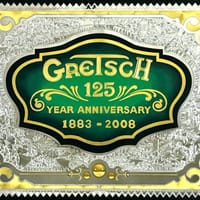|
'On the Brush' in BLAG 04 features a project by Phool Patti in Pakistan. Emily Gosling caught up with the social enterprise's founder, Ali Salman Anchan, to learn more about this traditional decorative artform. “My philosophy is that if you mix the colours right, you create a masterpiece”, says Ali Salman Anchan, the artist founder of Phool Patti (@phool_patti), a social enterprise and entrepreneurship project that promotes traditional Pakistani truck art around the world. If you’ve seen his work and that of his organisation, you’ll know he’s certainly a deft and skilful colour-mixer. But he’s talking metaphorically as much as he is literally. “My vision when I started Phool Patti was to take the trucks into small towns and villages where maybe there are no televisions and no newspapers, where the internet isn’t very active—and to use them to convey positive messages,” Salman Anchan explains. 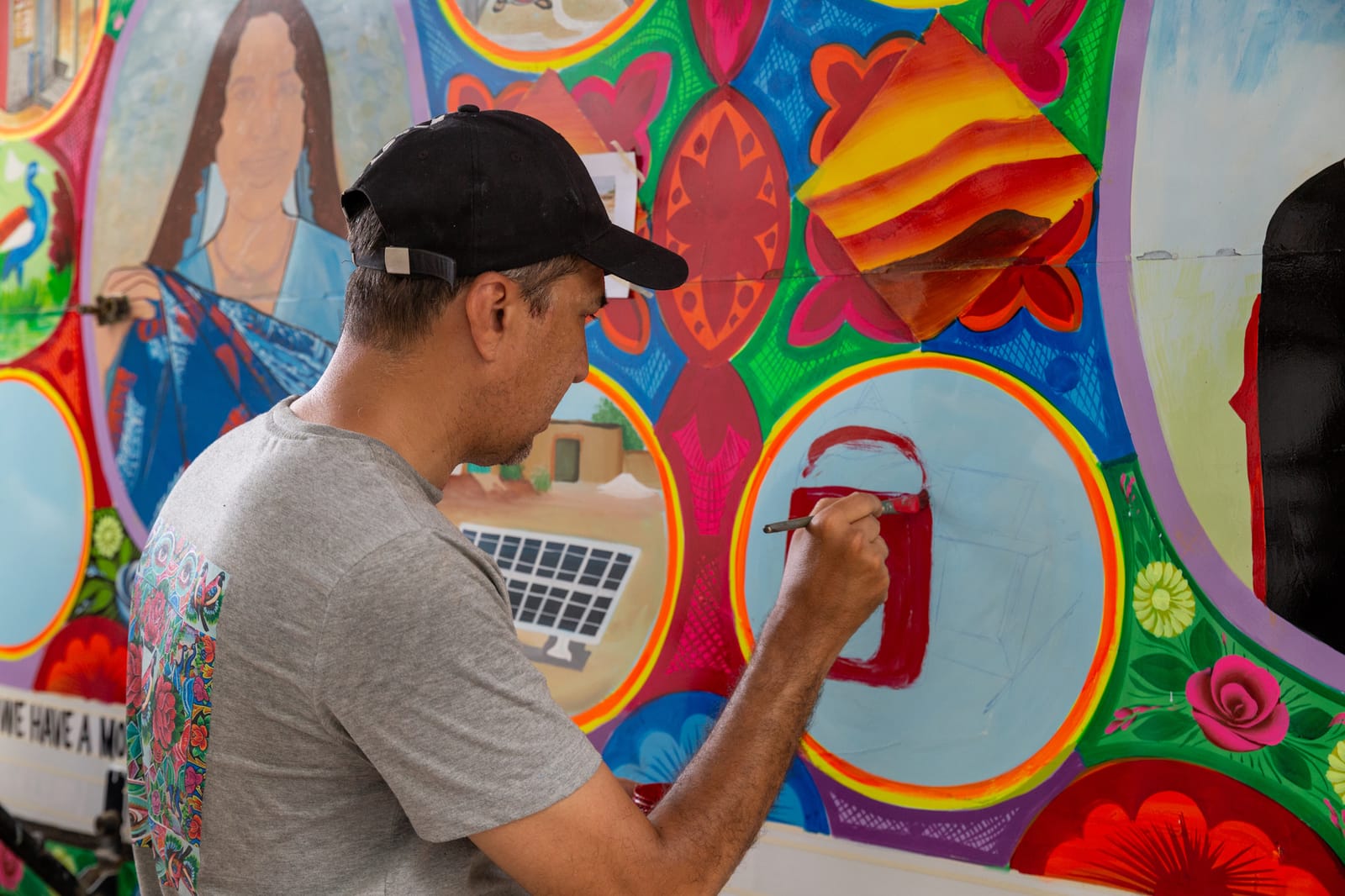 Ali Salman Anchan from Phool Patti working on a truck for the Disasters Emergency Commission (DEC). Photo: Zoral Naik / @zoralnaik. “We’ve done things around women's empowerment; children’s education; transgender rights; encouraging every community of religion—Christians, Hindus, Muslims, Sikhs, whoever lives in Pakistan—to live peacefully and gracefully, and show love to each other, not to hate each other.” “You can do a lot of things with this medium,” he continues. “I think colours and artists and art know better than anyone else that peace is so important. If all religions and communities come together, it becomes a more beautiful bouquet of flowers. You don’t hate.” It’s powerful stuff; just as Phool Patti’s vibrant artworks pack a mighty punch visually. 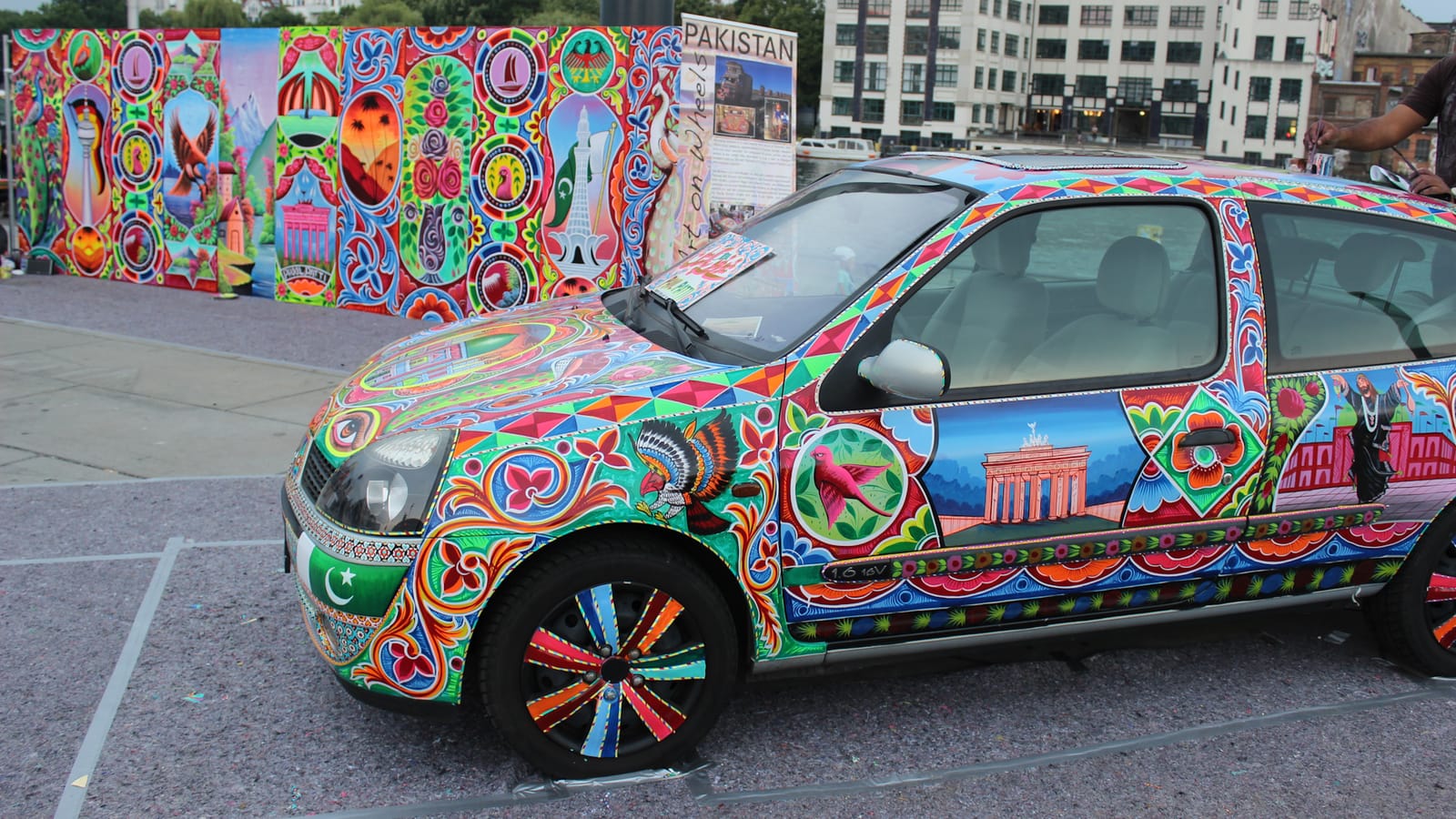 Phool Patti on display at Berlin's East Side gallery. Phool Patti takes its name from the Urdu term for what’s referred to by Westerners as ‘truck art’, but literally translates as 'flower petal'—perhaps a more accurate descriptor for this indigenous, and historically unfairly maligned artform. Indeed, ‘truck art’ feels far too reductive when you consider that it started out on wooden carts. And that today, it spans vehicles of all kinds, from boats and ships, to those with two, three, four, or more wheels. 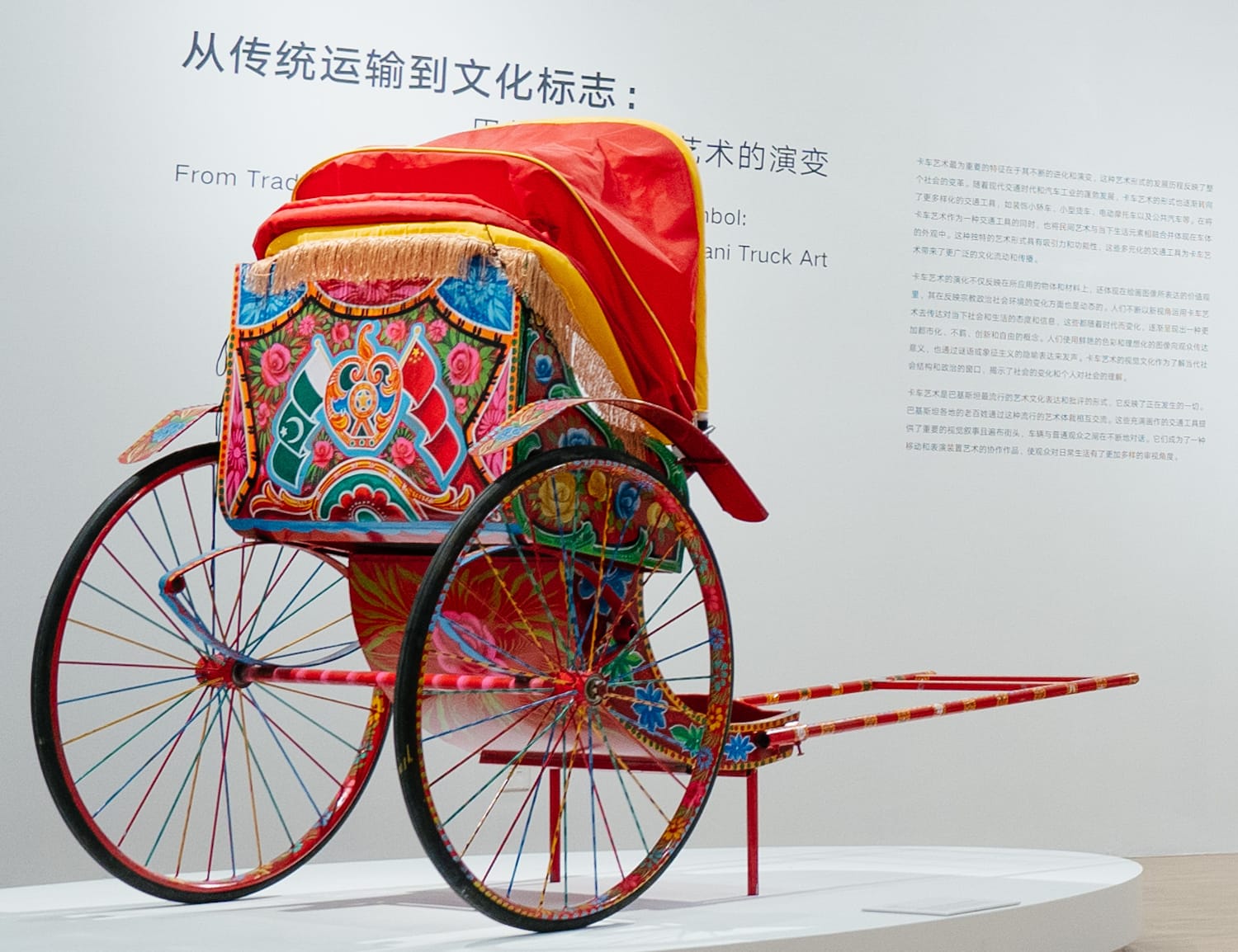 Traditional cart decorated by Phool Patti for an exhibition of their work at the Langfang Art Centre in China, 2023. Phool Patti's work from a sports car in Canada to a tram in Bulgaria. The artform has also migrated beyond its traditional moving canvasses, and can now be found on trainers, murals, and iconic animals such as the Swiss cow, and Berlin bear. Phool Patti's decorative art applied to Switzerland's cow and Berlin's bear. The bear (pictured, 2016), which journeyed from Berlin to Islamabad, stands arms aloft, decked out in the sorts of unabashed colour combinations and maximalist patterns that can’t fail to perk up even the most misanthropic and world-weary amongst us. It also has the word wilkommen (German for ‘welcome’) spelled out across his chest, and feels beautifully emblematic of Phool Patti’s ethos: openness, uniting disparate communities, spreading positivity through creativity, forging friendships between Pakistan and the rest of the world. 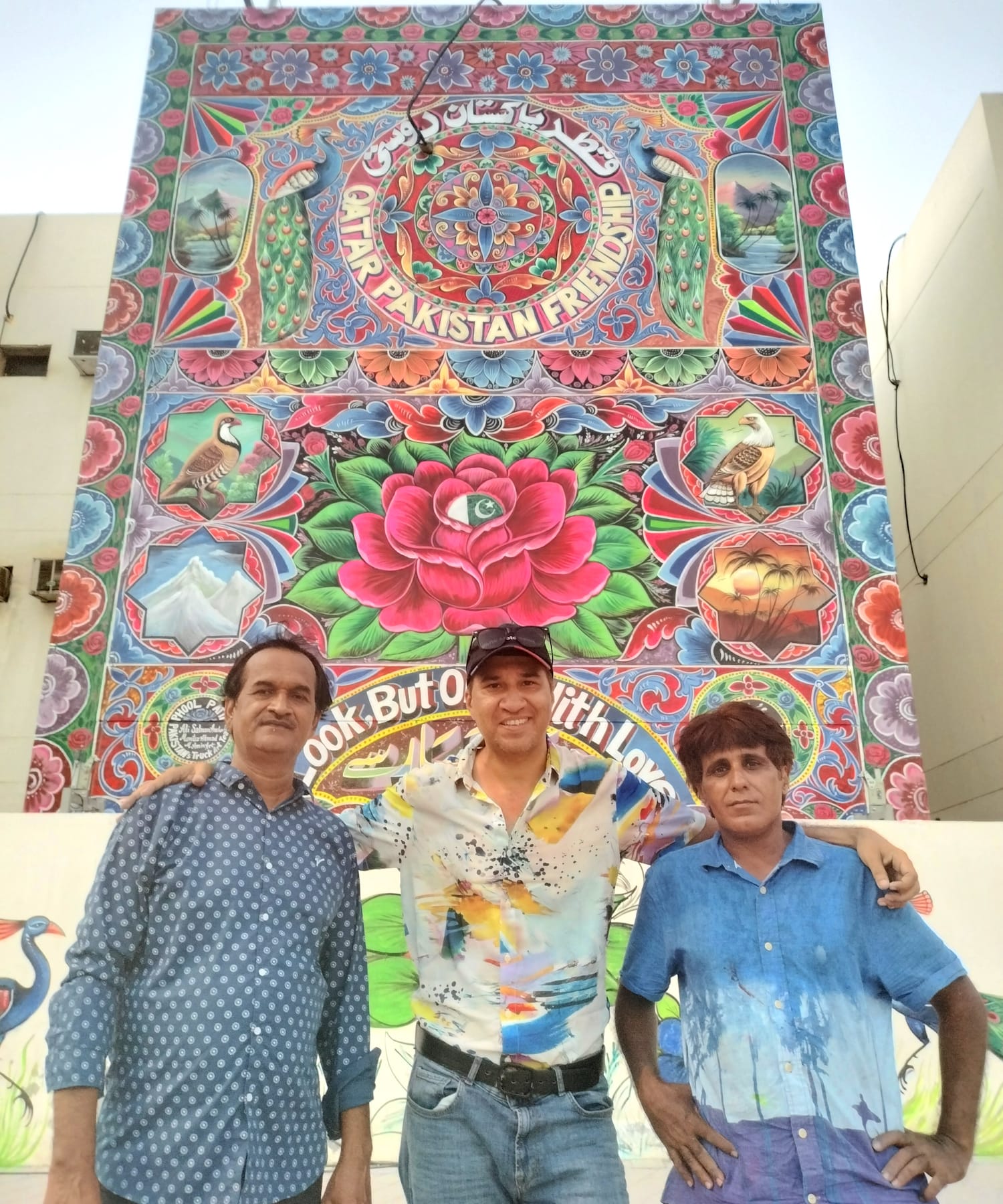 Team Phool Patti in front of the mural painted for the 2022 football world cup in Qatar. From left: M Amin, Ali Salman Anchan, and Mr Mumtaz Ahmad. Salman Anchan founded Phool Patti just over a decade ago, and is one of three core members alongside head artist Mumtaz Ahmed (@mumtaz9381gmail.co) and director M Amin. The organisation now comprises a whole team of directors and artists; and operates on a transparent social entrepreneurship model—the money made from every project is always equally distributed among Phool Patti’s artists, regardless of how much work has come in. Phool Patti’s artworks have now spanned buildings across Europe, North America, the Middle East, and Asia. Wider interest in truck art first started to grow when tourists began visiting Pakistan from the 1950s onwards, after it gained independence from Britain in 1947, according to Salman Anchan. “Tourists were fascinated to see these colourful vehicles, and referred to the work as truck art, only later learning the local term Phool Patti." 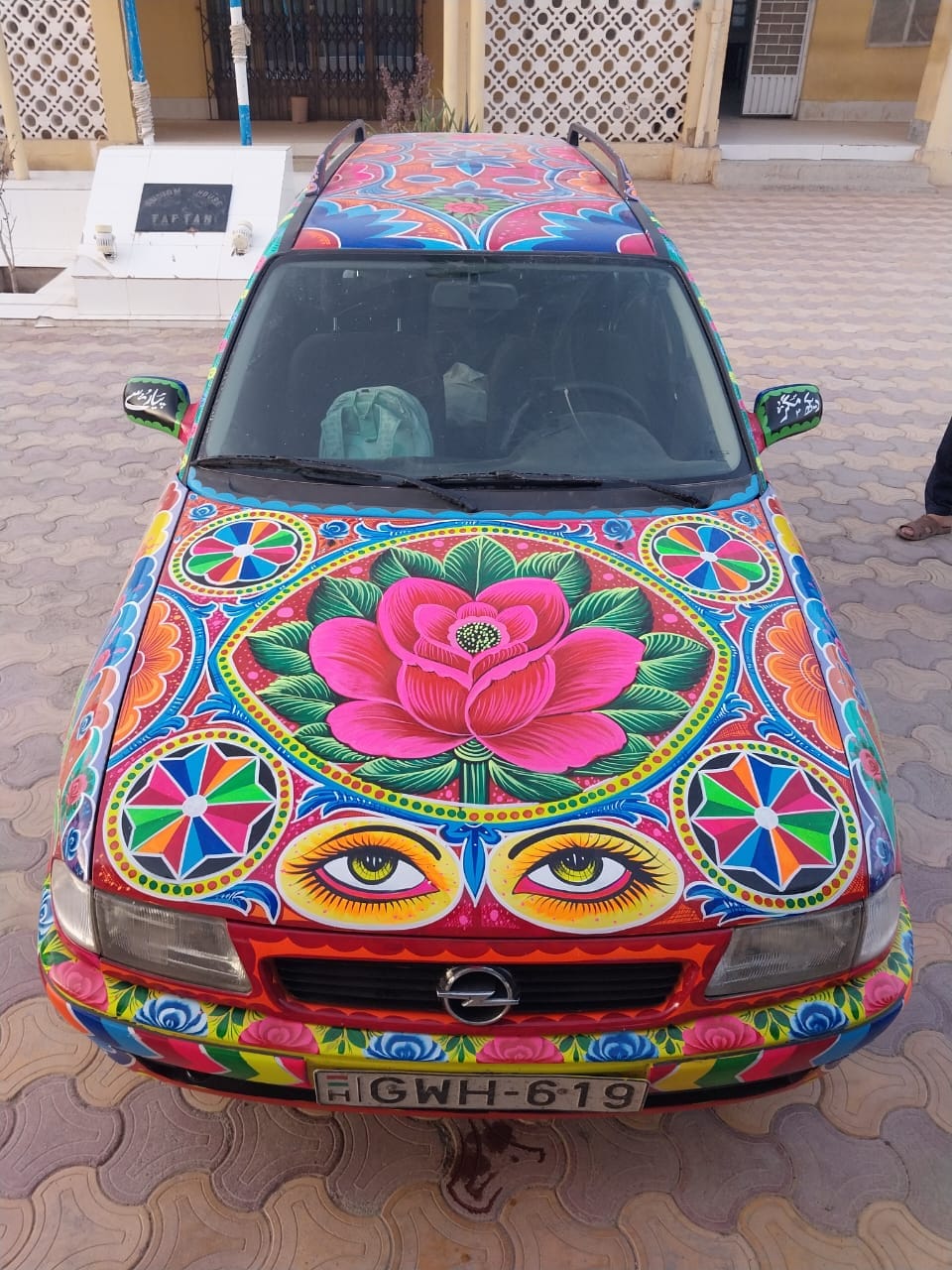 Vehicle decorated by Phool Patti for a Hungarian tourist in Pakistan. Before motorised vehicles were invented, ‘truck art’ had been used to decorate camel- and horse-drawn carts, he explains, but things took off in the form we’re more familiar with today around 100 years ago. “Before Pakistan gained independence, the British introduced a new transportation system and Bradford trucks entered the Pakistani market in the 1920s,” he explains. “In Pakistan, we’ve always loved to paint our vehicles. It’s in our blood.”
Pakistan is just one of the countries that feature in Issue 04 of BLAG. Get 20% off the annual plan to have this and Issue 03 shipped to you—that's 144 pages of advertising-free adventures in sign painting to enjoy.
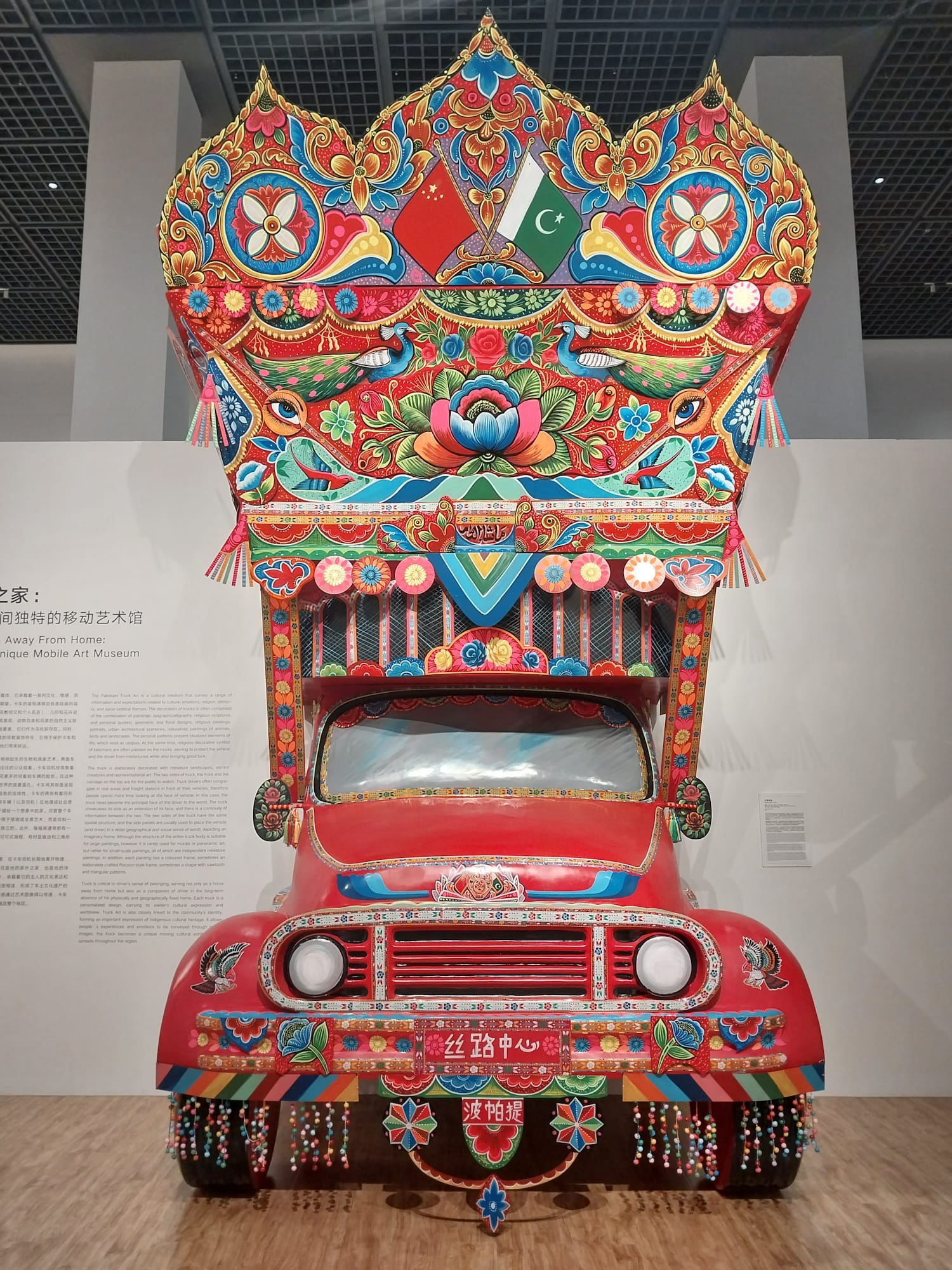 Cargo truck decorated by Phool Patti for an exhibition of their work at the Langfang Art Centre in China, 2023. As had been the case for centuries before, truck art was used as a form of storytelling—disseminating messages, celebrating important milestones, or simply reflecting zeitgeisty topics—with certain recurring motifs: landscape imagery, flowers, colourful patterns, animals and birds. 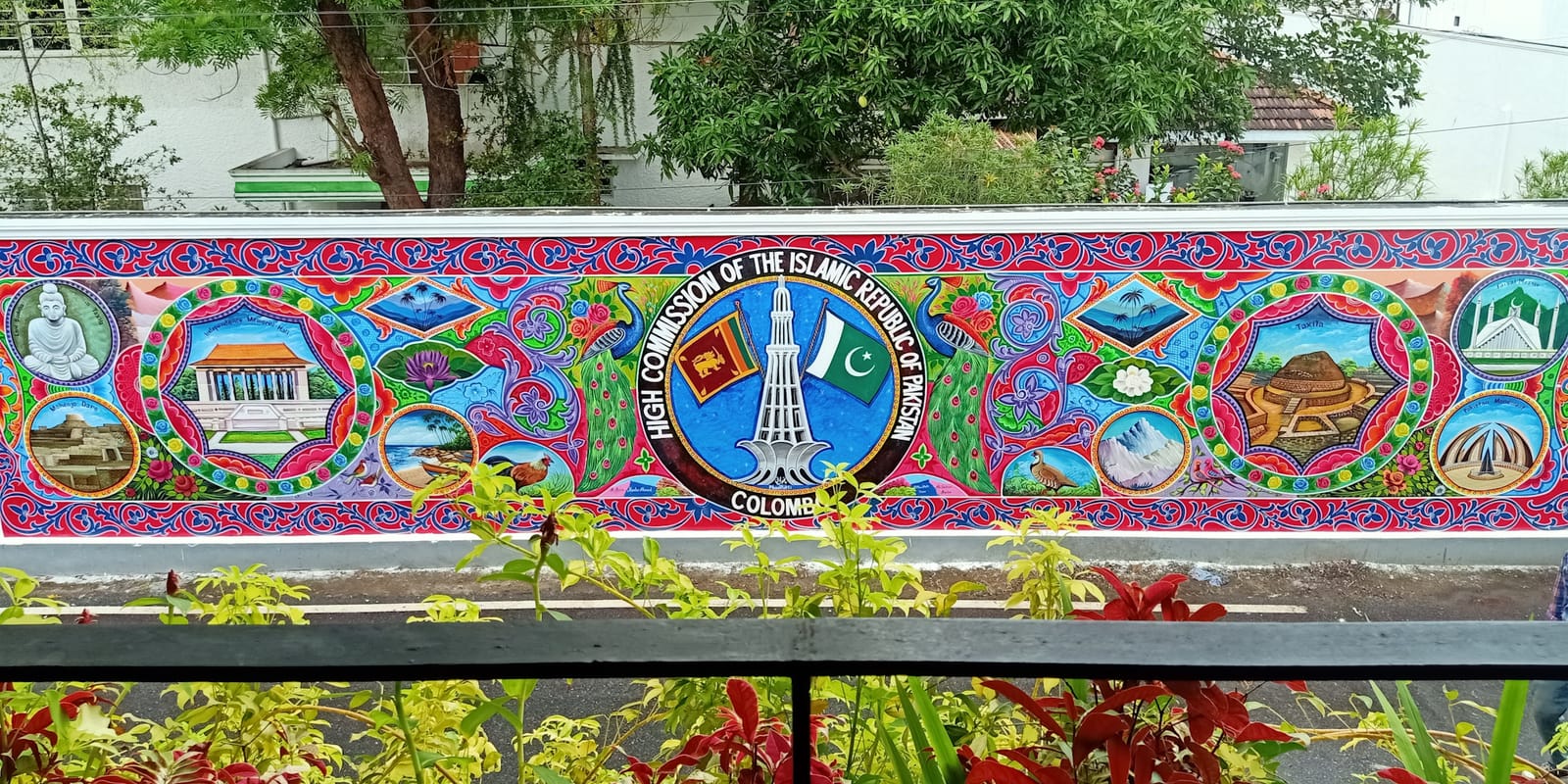 Mural by Phool Patti at the Pakistan High Commission in Colombo, Sri Lanka. Truck art is about far more than surface decoration: its multifarious implications and backstories reveal a lot about class, hierarchy, the meaning of ‘art’, the gulf in so many places between wealth and poverty, the devastating impact of climate crisis, to name a few. Salman Anchan’s background is in art and graphic design, and he worked in various creative departments prior to founding Phool Patti. His relentless passion for truck art, and colour itself, started in childhood: “At school I’d skip class to watch the truck artists and billboard artists—I’ve always been fascinated by these things,” he says. Such vehicles are veritable showstoppers for tourists, but in Pakistan, they’re very much part of the fabric of the everyday. 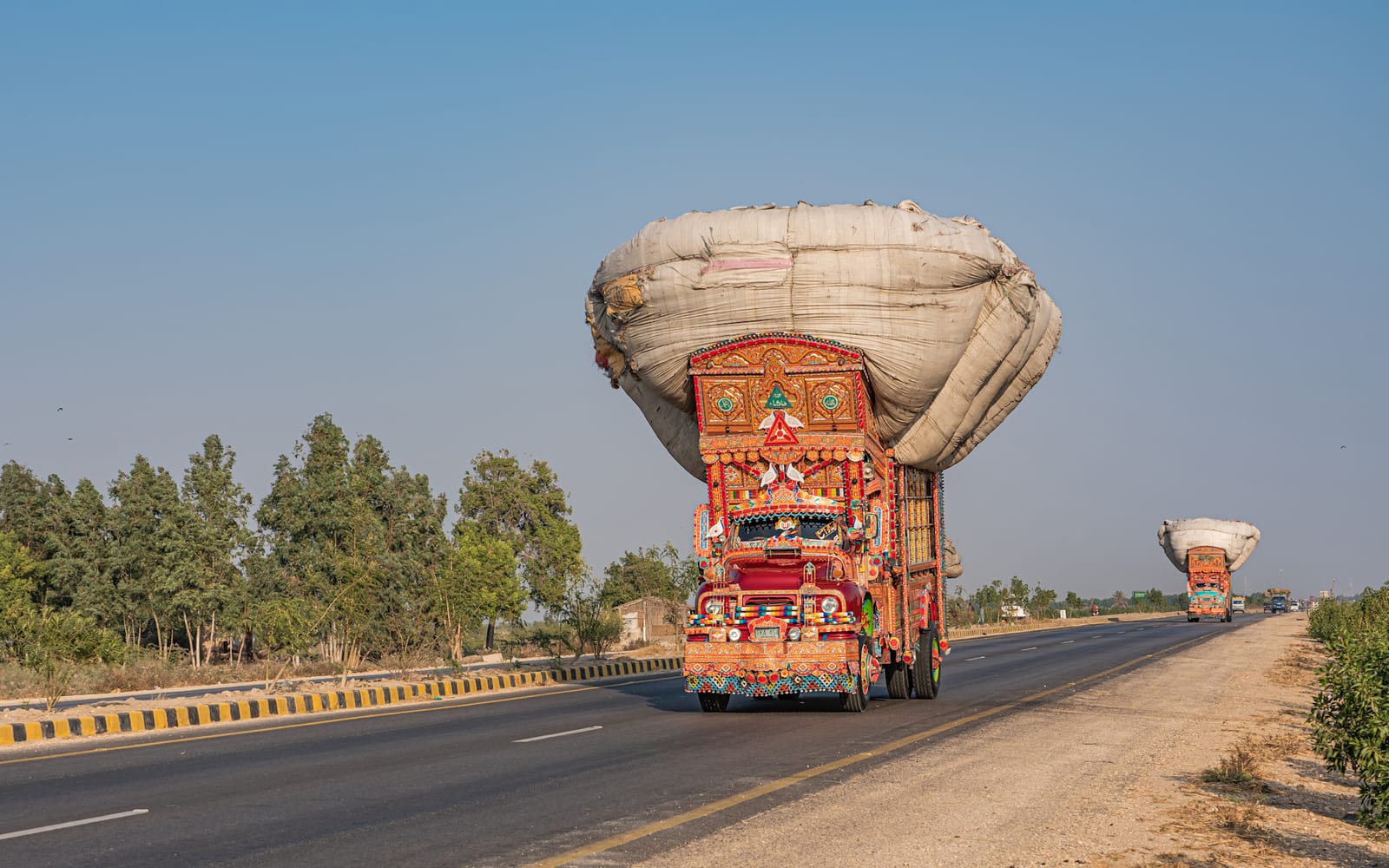 A truck and its load on the highway between Thatta and Karachi, Pakistan. Photo: A.Savin. Phool Patti is also motivated by a drive to redress the perception of truck art as merely a crude mode of decoration—the preserve of the uneducated. “It’s always been seen as lower class,” says Salman Anchan. “Truck art belongs to its community in a way—the truck drivers, and local artists. Universities and institutions would never teach the kind of techniques we use: they’re passed from generation to generation, or from local artist teachers who pass on their skills, but without any formal training.” Fledgling truck artists usually train under an experienced senior in a workshop in an apprenticeship of sorts that lasts around five to seven years. Mr Mumtaz Ahmad and Mr Sakeel from Phool Patti working on a truck for the Disasters Emergency Commission (DEC). Photos: Zoral Naik / @zoralnaik. “Even now, there’s a huge gap between truck artists and the elite artistic circles: it’s seen as indigenous art or folk art,” Salman Anchan continues. “People either love it or hate it, but either way, most of the time they don’t know anything about it. Many people still can’t accept it as an artform.” While truck art’s roots are in indigenous tradition, it’s continually evolving. “A lot of artists make work about whatever is popular that day: the team that won the World Cup, a politician who’s in the news, or a famous singer—whatever has captured the national mood. Now, you can see what’s trending on Facebook or Twitter, but we were using trucks for that long before those existed.'' As well as paints, it’s common to see artists use decorative accoutrements such as reflectors, plastics, steel, and stickers. Looking ahead, Salman Ancham is keen to evolve truck art and take it into the 21st century, exploring how things like digital animation and AI can be used to augment it. 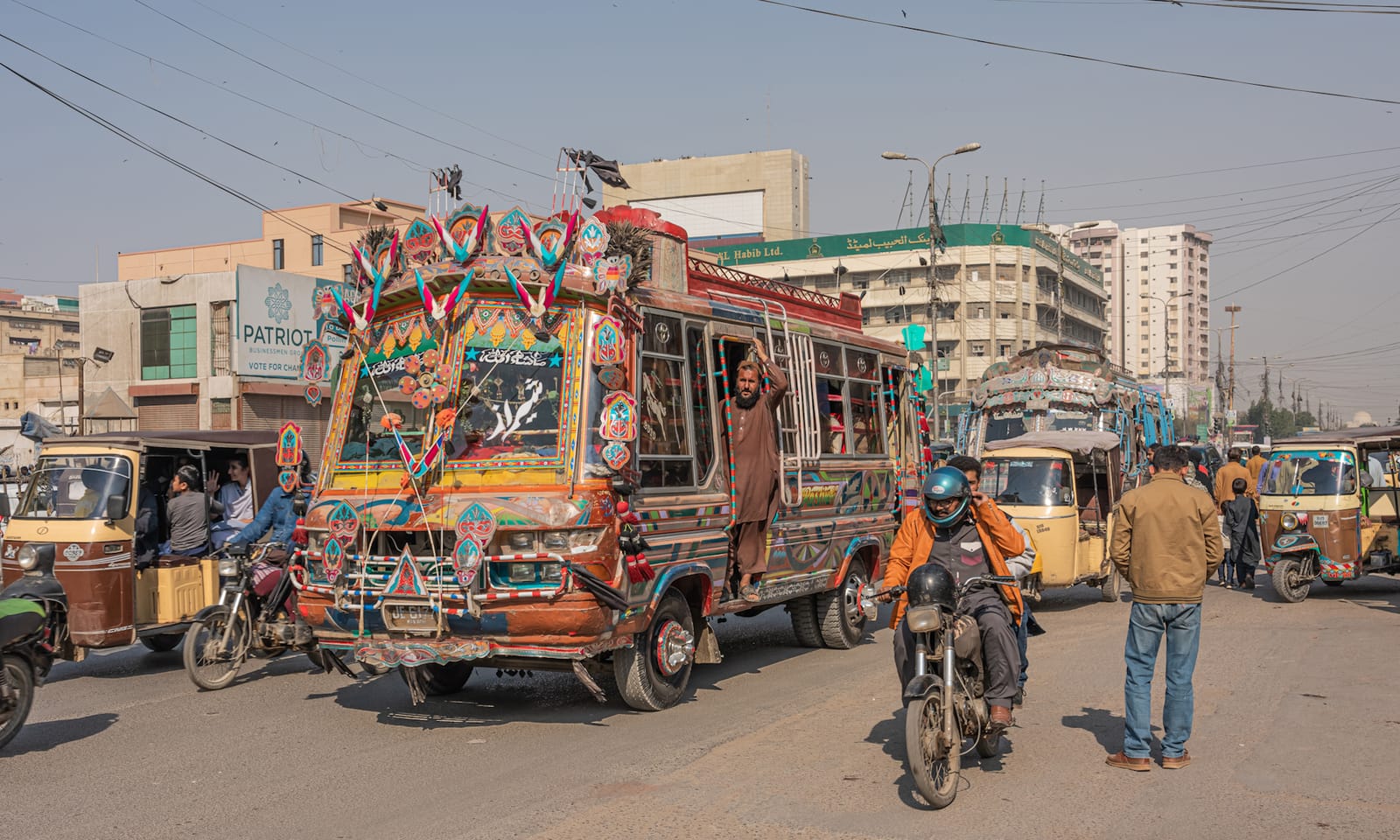 Bus on the streets of Karachi, Pakistan. Photo: A.Savin. Earlier this year, Phool Patti undertook what Salman Anchan has described as his most fulfilling project to date: a bid to bring a little joy back to the people affected by Pakistan’s devastating floods in 2022. The Sindh province received more than eight times its average rainfall, with floods covering one-third of Pakistan’s surface, and causing an estimated 1,700 deaths. Phool Patti's GULRAIZ beginning work on the DEC truck, and the finished piece. Photos: Zoral Naik / @zoralnaik. The Disasters Emergency Committee (DEC) commissied Phool Patti to decorate one of the vans that was used to transport medical supplies. The images tell the stories of some of the floods’ survivors through portraits, site-specific imagery, pattern, hand-wrought text, and above all, that vibrant colour palette that’s integral to Phool Patti’s artform. “My belief is that if you want to do something positive and make a change to society, art can make a small contribution towards that.” Written by Emily Gosling / @nalascarlett
There's more from Emily Gosling in the BLAG 03 feature 'Tricks of the Eye: Optical Illusions in Murals'. You'll receive this and BLAG 04 if you join today with 20% off the annual plan.
More Vehicles
|
